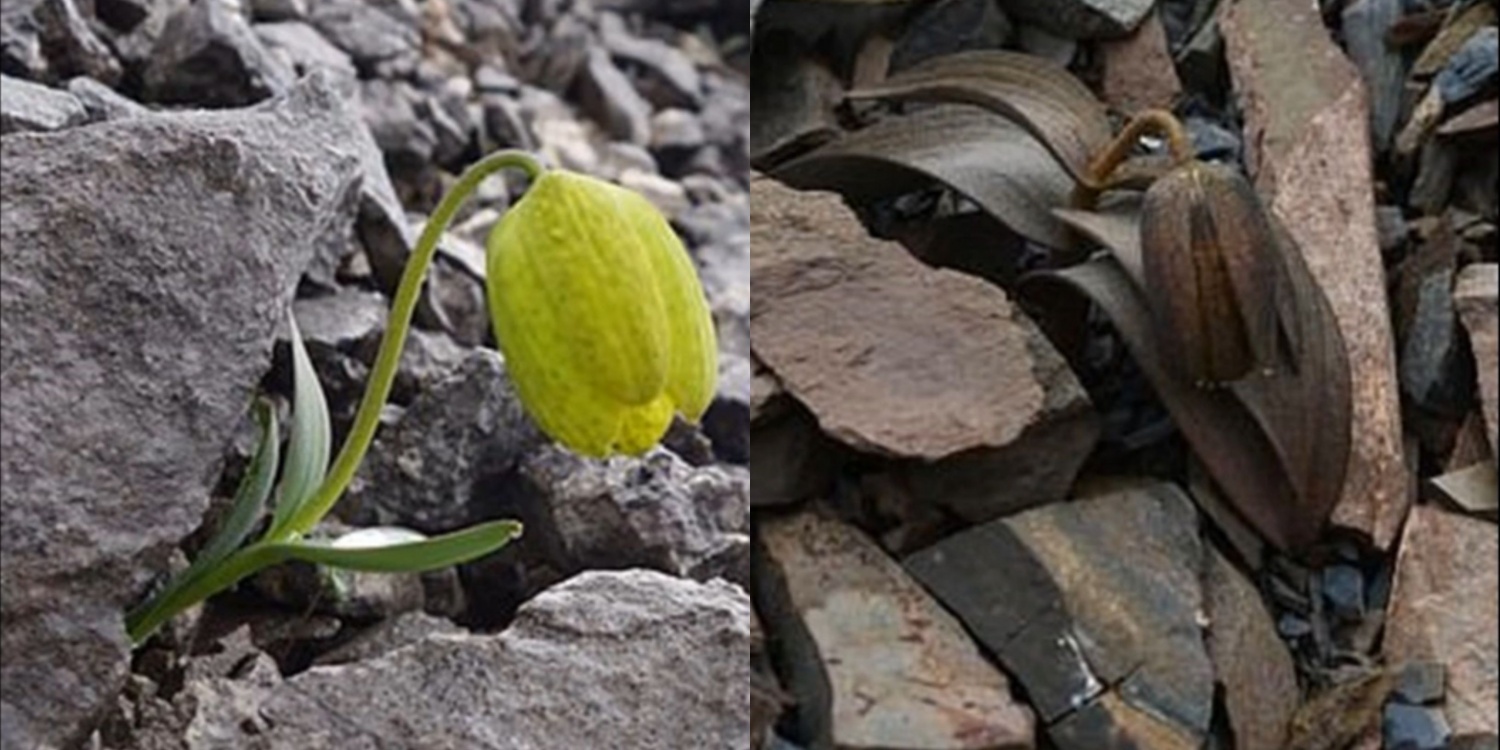
[ad_1]
A plant commonly found on the rocky slopes of the Hengduan Mountains in China has evolved to become less visible, turning its color from bright green to gray, matching rocks in areas where it is heavily harvested.
Fritillaria delavayi it has been growing in China for thousands of years and is used in traditional medicine. But the plant has disappeared from view, blending into the rocks due to its growing commercial harvest. It has now become less visible to the human eye so that it cannot be easily seen by foragers.
This means that humans have become the driving force behind their evolution, changing colors to protect themselves and have a better chance of surviving the harsh world, according to Science Daily.
Dramatic effect on the evolution of plants
The study, published in Current biology, was led by scientists from the Kunming Institute of Botany (Chinese Academy of Sciences) and the University of Exeter and discovered how humans can influence the evolution of plants.
The researchers measured how well plants from different populations matched their mountain environment and how easy they were to harvest. They also interviewed people to estimate how these plants were harvested in each location.
Based on the computer experiment, it takes longer to collect camouflaged plants, which suggests the influence of people in the rapid evolution of this species in the formation of a new color, The Guardian reported.
Professor Martin Stevens, of the Center for Ecology and Conservation at the University of Exeter, said it is extraordinary that humans have such a direct influence on the coloration of wild organisms such as the Fritillaria delavayi plant, not only for their survival but as part of the evolution of the plant in general.
Mimicry is a defense mechanism employed by many organisms from the animal kingdom to plants to hide from predators, or in this case the foragers. Humans have indeed led the evolution of defensive strategies in some plant species, which is surprising that not many studies have been conducted on them.
Read also: Flowers adapt to climate change by changing color
The Fritillaria delavayi plant
The Fritillaria delavayi plant grows flowers once a year after the fifth year. Its leaves can vary in color: brown, green or gray. Additionally, it is part of traditional Chinese medicine where its bulb has been used for over 2,000 years and is said to be very expensive as its popularity has increased in recent years.
As it has become known to many, there is also a spike in its harvest that threatens plants. Dr. Yang Niu of the Kunming Institute of Botany said that they initially thought herbivores caused the mimetic evolution of the Fritillaria delavayi plant. But then he realized they were humans.
The commercial harvest of this species is a stronger selective pressure than some natural pressures that stimulate the evolution of the plant. Currently, Earth’s biodiversity is shaped by nature and man.
Learn more: Researchers are turning to artificial intelligence to protect orchids and other threatened species
Check for more news and information on Evolution to Science Times.
.
[ad_2]
Source link